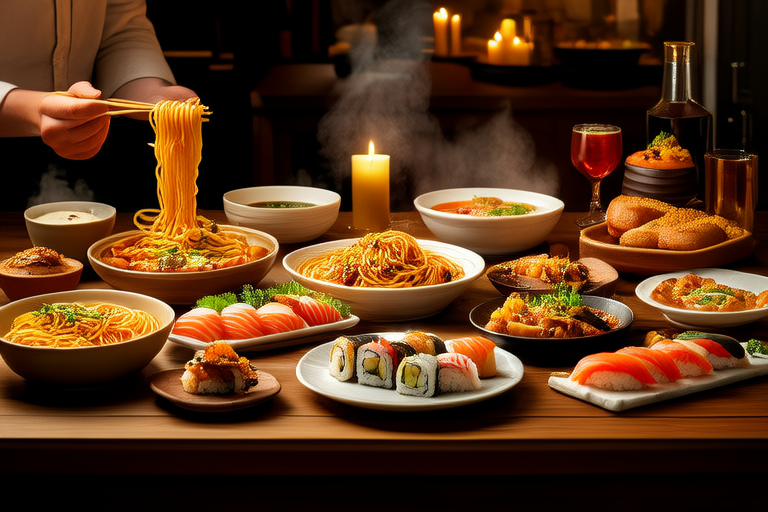Global Gastronomy: Exploring Cuisine and Culture

Global Gastronomy: Exploring Cuisine and Culture
Introduction
Global gastronomy is the study of food and its cultural significance around the world. It encompasses the ways in which different societies prepare, consume, and celebrate their meals, offering a window into the rich tapestry of human experience. Beyond mere sustenance, food is an expression of history, tradition, and social dynamics. Each dish tells a story, reflecting the values, beliefs, and customs of the people who created it. By exploring global gastronomy, we gain insight into the cultural identities of various communities and develop a deeper appreciation for the diversity of our world.
The Role of Food in Cultural Identity
Cuisine plays a pivotal role in shaping cultural identity. It often serves as a symbol of national pride and heritage, connecting individuals to their roots. For example, sushi in Japan represents not only a delicacy but also centuries of refined culinary artistry. Similarly, paella in Spain is emblematic of regional traditions and agricultural practices. These iconic dishes are deeply intertwined with their respective cultures, embodying the essence of what it means to be Japanese or Spanish.
In many cases, food is central to communal gatherings and celebrations. Holidays, festivals, and religious observances frequently feature specific dishes that have been passed down through generations. These culinary traditions reinforce social bonds and foster a sense of belonging among community members. Thus, the relationship between food and cultural identity is reciprocal: while food shapes cultural identity, cultural identity influences the evolution of cuisine.
Regional Flavors and Ingredients
The unique ingredients and cooking techniques found in different parts of the world reflect the geographical, climatic, and resource-rich environments of those areas. For instance, coastal regions tend to rely heavily on seafood, whereas inland areas might focus on meat and dairy products. Tropical climates often produce fruits and vegetables that thrive in warm weather, such as mangoes, papayas, and avocados.
Geography also dictates available cooking methods. In mountainous regions, where wood is abundant, grilling and roasting are common. Conversely, in areas with access to water sources like rivers or lakes, boiling and steaming are preferred. These factors contribute to the development of distinct regional flavors and styles, each with its own set of signature dishes.
Fusion Cuisine and Globalization
The rise of fusion cuisine can be attributed largely to globalization, which has facilitated greater interaction between cultures. This phenomenon has led to innovative combinations of flavors and techniques, resulting in new culinary creations. However, the impact of globalization on traditional food practices is mixed.
On one hand, fusion cuisine encourages creativity and experimentation, allowing chefs to push boundaries and create exciting new dishes. On the other hand, there is concern about the dilution of authentic culinary traditions. As foreign influences become more prevalent, some fear that local specialties may lose their originality and integrity. Nevertheless, many argue that adaptation and evolution are natural processes in any living culture, including gastronomy.
Culinary Tourism
Culinary tourism refers to travel motivated by a desire to experience and learn about the food and drink of a destination. This trend has grown significantly over recent years, driven by increasing interest in authentic experiences and cultural immersion. Culinary tourism not only enriches travelers’ understanding of different cultures but also provides significant economic benefits to local communities.
For those interested in culinary tourism, here are some tips for enjoying authentic local cuisine:
- Seek out small, family-run restaurants rather than chain establishments.
- Participate in cooking classes or market tours to gain firsthand knowledge of local ingredients and preparation methods.
- Try street food vendors for an authentic taste of everyday life.
Sustainability in Gastronomy
Sustainable food practices are increasingly important in modern gastronomy. With growing awareness of environmental issues, consumers are seeking out eco-friendly options when dining out. Sustainable practices include reducing waste, sourcing locally grown produce, and supporting ethical farming methods.
Initiatives aimed at preserving traditional recipes and promoting eco-friendly eating habits are gaining traction worldwide. Organizations and individuals are working together to ensure that future generations can continue to enjoy the rich culinary heritage of various cultures while protecting the planet.
Conclusion
Global gastronomy offers a fascinating glimpse into the diverse cultures of our world. From shaping cultural identity to reflecting regional flavors and ingredients, food is a powerful medium for storytelling. While fusion cuisine and globalization present challenges, they also open doors to new possibilities. Culinary tourism provides opportunities for personal growth and economic empowerment, while sustainability ensures that future generations will inherit a healthy planet and vibrant culinary traditions.
We encourage readers to explore new cuisines as a way of deepening their appreciation for diverse cultures. By doing so, we can foster mutual respect and understanding, contributing to a more harmonious global society.